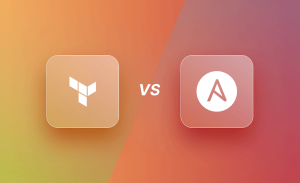A database index is a data structure that enables fast retrieval of specific data from a database table. Indexes help to improve the performance of database operations such as searching, sorting, filtering, and joining data. They work by creating a copy of the table data in a separate data structure that is optimized for quick lookups, rather than scanning the entire table.
Without indexes, the database would have to scan every row in a table to find specific data, which can be time-consuming and resource-intensive, especially for large tables. Indexes make it possible for the database to find the relevant data more quickly by creating a sort of roadmap that tells the database where to look for specific values.
Database indexes are typically created on one or more columns of a table. When a query is executed that includes one or more of these indexed columns, the database can use the index to quickly locate the relevant data, rather than having to scan the entire table. The speedup achieved by using an index can be dramatic, especially for large tables or complex queries.
There are different types of indexes, each with their own strengths and weaknesses. Some of the most common types include:
- B-tree indexes: These are the most common type of index used in databases. They work well for columns with a wide range of values, and are optimized for range queries.
- Hash indexes: These are used for columns with a small number of distinct values. They are very fast for exact-match queries, but do not support range queries.
- Bitmap indexes: These are used for columns with a small number of distinct values, where each value occurs frequently. They can be very fast for certain types of queries, such as counting the number of rows that match a specific set of values.
Creating an index involves a trade-off between the time it takes to build the index and the performance benefits it provides. Indexes take up space on disk and require additional overhead to maintain, so it is important to only create indexes that will be used frequently and will significantly improve performance.
In summary, database indexes are a powerful tool for improving database performance by enabling fast retrieval of specific data. They work by creating a separate data structure that is optimized for lookups, rather than scanning the entire table. By carefully choosing which columns to index and which type of index to use, developers can achieve significant performance gains for their database operations.

In database management systems, there are two types of indexes that can be used to improve query performance: clustered and nonclustered indexes.
Clustered Indexes: A clustered index determines the physical order of data in a table. It reorders the rows of a table based on the values of one or more columns. When you create a clustered index on a table, you are telling the database to store the data in that table based on the values in the clustered index column(s). This means that rows are stored in the order of the values in the index, and there can be only one clustered index per table. Because the data is stored in the order of the clustered index, it can be retrieved quickly, making it an efficient way to access data.
Nonclustered Indexes: A nonclustered index is a separate structure that is stored separately from the data table. It is a data structure that contains the indexed column(s) and a pointer to the location of the corresponding data row(s). Unlike a clustered index, a nonclustered index does not affect the physical order of the data in the table. Instead, it provides a way to quickly search for data based on the indexed column(s). A table can have many nonclustered indexes, and they can be created on one or more columns.
When a query is executed, the database engine will use the appropriate index to retrieve the data based on the search criteria specified in the query. If a clustered index exists on the table and it matches the search criteria, the database engine will use the clustered index to retrieve the data. If a nonclustered index exists on the table that matches the search criteria, the database engine will use the nonclustered index to retrieve the data and then use the pointer in the index to locate the actual data in the table.
In summary, both clustered and nonclustered indexes are important tools in improving database query performance. Clustered indexes can be useful for frequently used columns with high selectivity, while nonclustered indexes can be useful for columns that are frequently used in queries but have low selectivity.
Indexes are data structures associated with a table or view that improve the speed of retrieving rows from the table or view. An index is composed of keys constructed from one or more columns in the table or view. These keys are stored in a structure, typically a B-tree, which enables fast and efficient retrieval of the row or rows associated with the key values.
There are two main types of indexes in SQL Server: clustered and nonclustered indexes.
A clustered index sorts and stores the data rows in the table or view based on the values of the clustered index’s key columns. Since the data rows can only be stored in one order, there can only be one clustered index per table. A table with a clustered index is referred to as a clustered table, while a table without a clustered index stores its data rows in an unordered structure known as a heap.
On the other hand, a nonclustered index has a separate structure from the data rows. It contains the nonclustered index key values and a pointer to the data row that contains the key value. This pointer is called a row locator. The structure of the row locator depends on whether the data pages are stored in a heap or a clustered table. For a heap, the row locator is a pointer to the row, while for a clustered table, the row locator is the clustered index key.
Both clustered and nonclustered indexes can be unique. A unique index ensures that no two rows can have the same value for the index key. Otherwise, the index is not unique, and multiple rows can share the same key value.
Whenever a table’s data is modified, the indexes associated with that table are automatically maintained. In addition, non-key columns can be added to the leaf level of a nonclustered index to bypass existing index key limits and enable fully covered, indexed queries.





